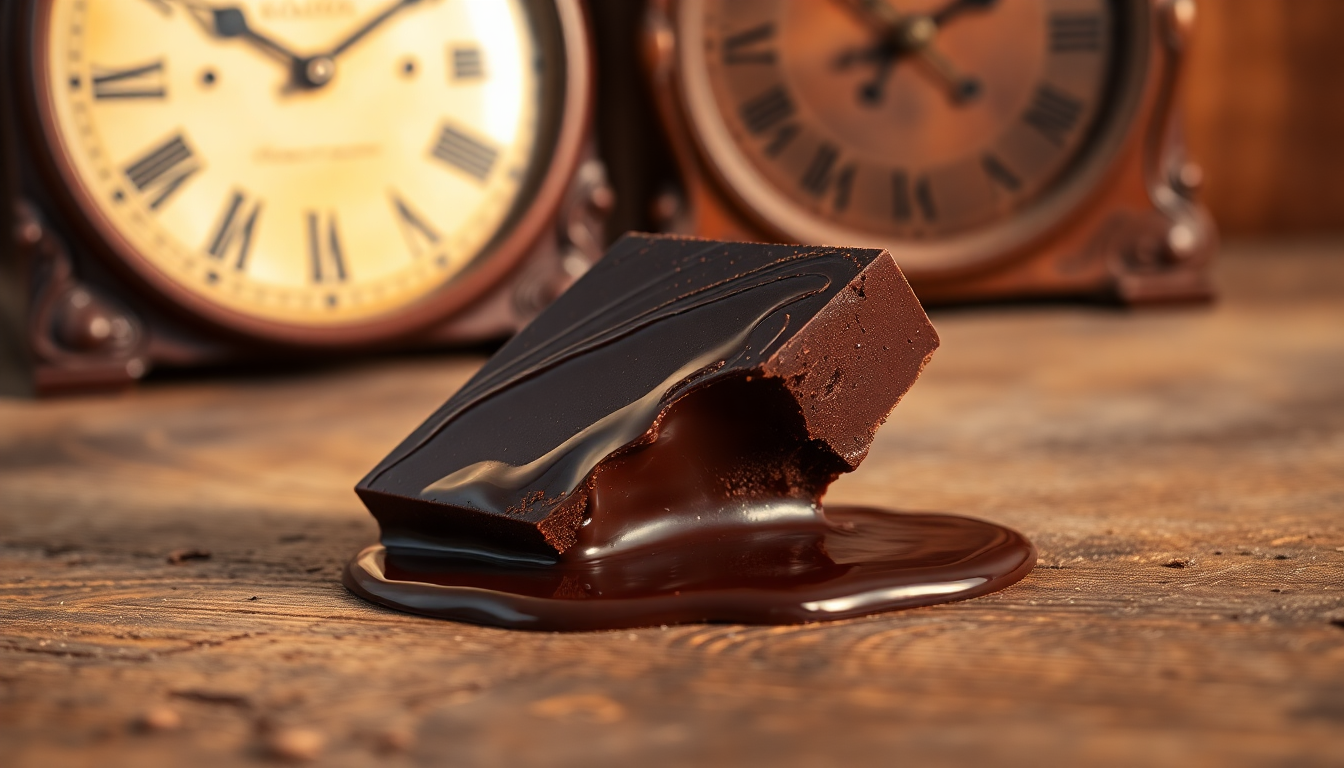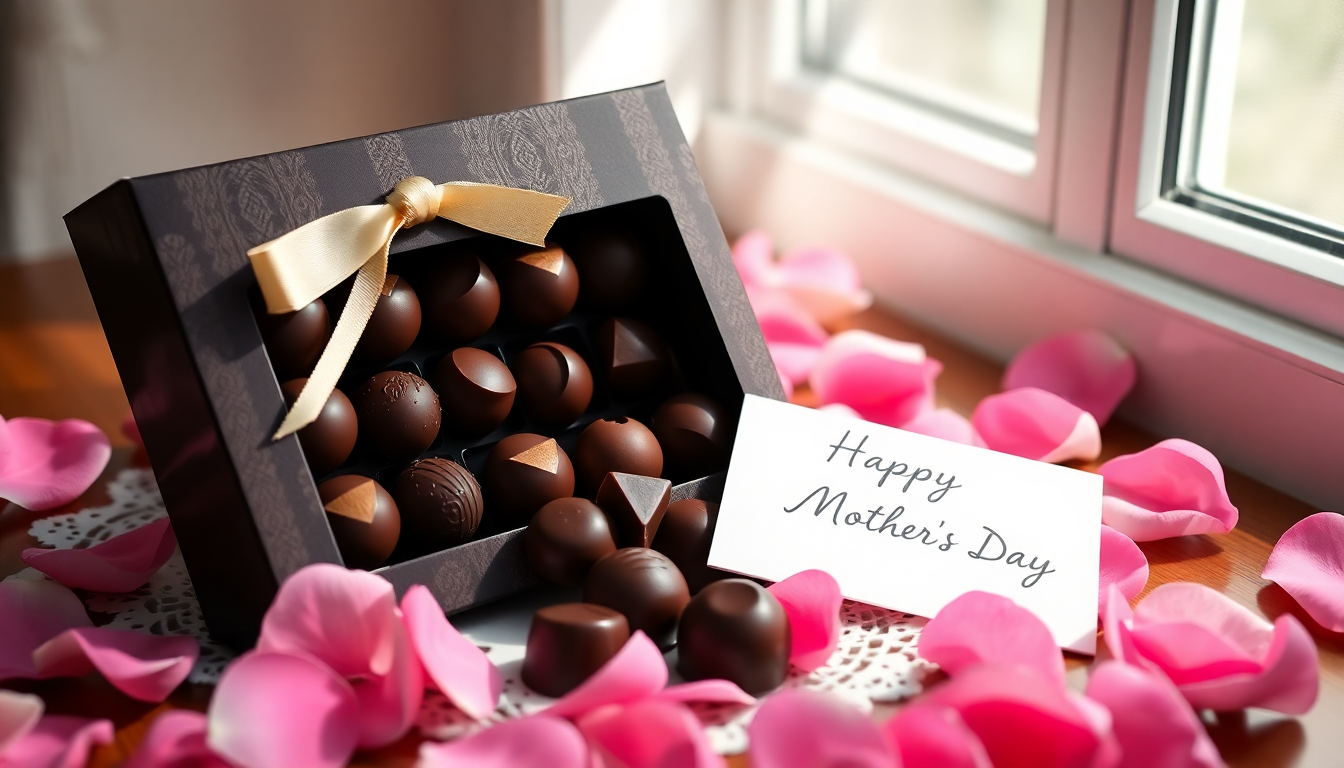
The Complete Guide to Chocolate Shelf Life
Chocolate is one of life's greatest pleasures, but knowing how to properly store it and understand its shelf life can make a significant difference in your enjoyment. Whether you're a chocolate enthusiast, a casual consumer, or someone who received a luxurious chocolate gift, understanding how long chocolate lasts is essential knowledge.
In this comprehensive guide, we'll explore everything you need to know about chocolate preservation, storage methods, and indicators that your chocolate may have passed its prime. We'll also discuss the factors that affect chocolate shelf life and provide expert tips to extend the freshness of your favorite treats.
Different Types of Chocolate and Their Shelf Lives
Dark Chocolate
Dark chocolate, with its higher cocoa content and lower milk content, generally has the longest shelf life among all chocolate varieties. When stored properly at room temperature in a cool, dry place:
- High-quality dark chocolate bars (70% cocoa or higher): 18-24 months
- Commercial dark chocolate bars: 12-16 months
- Dark chocolate with fillings or inclusions: 6-12 months
The higher the cocoa percentage, the longer dark chocolate tends to last. This is because cocoa butter is naturally stable, while additional ingredients like milk solids are more prone to deterioration.
Milk Chocolate
Milk chocolate contains dairy components, which makes it more susceptible to spoilage than dark chocolate:
- High-quality milk chocolate bars: 8-12 months
- Commercial milk chocolate bars: 6-10 months
- Milk chocolate with nuts, fruits, or other inclusions: 4-8 months
The milk fat content in milk chocolate makes it more vulnerable to going rancid, particularly when exposed to heat, light, or humidity.
White Chocolate
White chocolate has the shortest shelf life due to its high concentration of cocoa butter and milk solids, with no cocoa solids:
- High-quality white chocolate bars: 6-8 months
- Commercial white chocolate bars: 4-6 months
- White chocolate with add-ins: 2-4 months
Because white chocolate lacks the antioxidants present in cocoa solids, it's more prone to oxidation and developing off-flavors.
Factors Affecting Chocolate Shelf Life
Temperature
Temperature plays a crucial role in preserving chocolate quality. Ideally, chocolate should be stored at 65-70°F (18-21°C). Temperatures above 75°F (24°C) can cause chocolate to melt and lose its temper, resulting in fat bloom (those whitish streaks on the surface).
Extreme temperature fluctuations can be particularly damaging, causing sugar bloom and altering the chocolate's texture. Refrigeration can extend shelf life but introduces the risk of condensation when the chocolate is returned to room temperature.
Humidity
Chocolate and moisture are not friends. High humidity can cause:
- Sugar bloom (rough, grainy texture on the surface)
- Mold growth (particularly in filled chocolates)
- Altered flavor profiles
The ideal humidity for chocolate storage is below 50%. This is why chocolate should be stored in a dry environment, away from steam or water sources.
Light Exposure
Chocolate, especially milk and white varieties, is sensitive to light. UV rays can:
- Degrade fats in the chocolate
- Cause discoloration
- Accelerate oxidation
- Diminish flavor compounds
Storing chocolate in opaque containers or original packaging helps protect it from light damage.
Air Exposure
Oxygen is another enemy of chocolate freshness. When chocolate is exposed to air, oxidation occurs, which can lead to:
- Rancid flavors in the cocoa butter
- Stale taste
- Loss of aroma
- Textural changes
Keeping chocolate tightly wrapped or in airtight containers significantly extends its shelf life.
Signs That Chocolate Has Gone Bad
Visual Indicators
While chocolate rarely becomes unsafe to eat, it can certainly become unpalatable. Look for these visual cues:
- Fat bloom: Grayish-white streaks or spots on the surface (safe to eat but texture may be affected)
- Sugar bloom: Grainy, dull appearance (still safe but texture is compromised)
- Mold: Fuzzy spots, especially on filled chocolates (discard immediately)
- Color changes: Fading or darkening beyond the chocolate's normal appearance
Aroma Changes
Fresh chocolate has a rich, pleasant aroma. If your chocolate smells:
- Sour or fermented
- Rancid or "off"
- Musty or moldy
- Flat or lacking its characteristic scent
These are strong indicators that the chocolate has deteriorated.
Taste and Texture Differences
Even if chocolate looks acceptable, your palate can tell you if it's past its prime:
- Chalky or grainy texture
- Waxy mouthfeel
- Bitter notes that weren't originally present
- Lack of flavor complexity or "flatness"
- Unpleasant aftertaste
Optimal Storage Methods for Maximum Chocolate Life
Pantry Storage
For everyday chocolate consumption, pantry storage is ideal:
- Store in a cool, dry cabinet away from the stove or other heat sources
- Keep in original packaging or rewrap tightly in aluminum foil
- Place in an airtight container for additional protection
- Maintain a consistent temperature between 65-70°F (18-21°C)
- Keep away from strongly scented foods as chocolate can absorb odors
Refrigerator Storage
When ambient temperatures exceed 75°F (24°C), refrigeration may become necessary:
- Double-wrap chocolate in plastic wrap and then aluminum foil
- Place in an airtight container to prevent moisture and odor absorption
- Allow chocolate to come to room temperature before unwrapping to prevent condensation
- Best for short-term storage during hot weather
Freezer Storage
For long-term preservation (beyond 6 months):
- Wrap chocolate pieces individually
- Place in freezer-safe, airtight containers
- Label with the date of freezing
- Thaw in the refrigerator first, then at room temperature
- Only freeze plain chocolate bars; avoid freezing filled chocolates
Special Considerations for Different Chocolate Products
Chocolate Bars
Solid chocolate bars have the longest shelf life:
- Premium dark chocolate bars can last up to 2 years when properly stored
- Keep in original packaging or wrap in aluminum foil
- Store flat to prevent breakage and maintain appearance
Truffles and Filled Chocolates
Filled chocolates have significantly shorter shelf lives:
- Cream-filled truffles: 1-2 weeks at room temperature, 2-3 months refrigerated
- Caramel or ganache fillings: 2-4 weeks at room temperature, 3-4 months refrigerated
- Nut-filled chocolates: 1-2 months at room temperature, 4-6 months refrigerated
The moisture content in fillings accelerates deterioration and increases the risk of mold growth.
Chocolate Chips and Baking Chocolate
Baking chocolates often contain fewer additives and can last longer:
- Chocolate chips: 18-24 months
- Unsweetened baking chocolate: 24-36 months
- Cocoa powder: 2-3 years when kept dry
Hot Chocolate and Cocoa Mixes
Powdered chocolate products have extended shelf lives:
- Hot chocolate mix: 12-24 months
- Cocoa powder: 2-3 years
- Chocolate drink mixes: Follow the manufacturer's best-by date, typically 12-18 months
The low moisture content in these products contributes to their longevity.
Extending Chocolate's Shelf Life: Expert Tips
Quality Matters
Higher-quality chocolate generally lasts longer than lower-quality alternatives:
- Look for chocolate with fewer additives
- Higher cocoa content typically correlates with longer shelf life
- Proper tempering during manufacture affects long-term stability
Avoid "Temperature Shock"
Sudden temperature changes can damage chocolate's structure:
- Never move chocolate directly from freezer to room temperature
- Allow refrigerated chocolate to warm gradually
- Avoid storing chocolate near ovens, dishwashers, or sunny windows
Proper Handling
How you handle chocolate affects its longevity:
- Use clean, dry hands or utensils when handling
- Break rather than cut chocolate when possible to reduce surface exposure
- Reseal packages immediately after use
Strategic Purchasing
Plan your chocolate buying based on consumption patterns:
- Buy smaller quantities if you don't consume chocolate regularly
- Check production and best-by dates when purchasing
- Consider seasonal factors—avoid buying chocolate that may be exposed to heat during transport in summer
Chocolate Best-By Dates: What They Really Mean
Understanding Date Labels
Chocolate products typically carry best-by dates rather than expiration dates:
- "Best before" indicates quality, not safety
- "Production date" can help calculate potential shelf life
- Many chocolates remain perfectly fine months past their best-by date
Manufacturer Variations
Different chocolate makers use different dating systems:
- Some list production date plus shelf life
- Others simply provide a best-by date
- Premium chocolatiers may include specific storage instructions
Using Your Judgment
Sensory evaluation is often more reliable than dates:
- Appearance, smell, taste, and texture provide better indicators of quality
- Dark chocolate often remains good far beyond its best-by date
- Trust your senses over arbitrary dates
Common Myths About Chocolate Storage
"Chocolate Never Goes Bad"
While chocolate rarely becomes unsafe to eat, it certainly can become unpalatable. The high sugar content and low moisture inhibit bacterial growth, but quality degradation is real.
"Refrigeration Is Always Best"
Refrigeration can actually harm chocolate by introducing moisture and condensation issues. Room temperature storage is often preferable unless your environment is very warm.
"White Bloom Means Chocolate Is Spoiled"
Fat bloom and sugar bloom affect appearance and texture but don't make chocolate unsafe to eat. They're cosmetic issues rather than safety concerns.
"Freezing Ruins Chocolate"
When done properly, freezing can extend chocolate's shelf life. The key is proper wrapping to prevent freezer burn and gradual thawing to prevent condensation.
Reviving Less-Than-Fresh Chocolate
Cooking Applications
Chocolate that's not at its peak can still be repurposed:
- Use for baking, where slight quality changes won't be noticeable
- Melt for fondue or chocolate sauce
- Incorporate into smoothies or hot chocolate
Tempering Techniques
Sometimes, chocolate with fat bloom can be revitalized:
- Carefully melt and re-temper the chocolate
- This can restore shine and snap
- Works best with plain chocolate without fillings
Conclusion: Making Your Chocolate Last
Understanding how long chocolate lasts and the factors affecting its shelf life allows you to enjoy this delectable treat at its best. By implementing proper storage techniques, recognizing signs of quality deterioration, and knowing when chocolate is still usable despite cosmetic changes, you can maximize both enjoyment and value.
Remember that different types of chocolate have varying shelf lives, with dark chocolate generally outlasting milk and white varieties. Environmental factors like temperature, humidity, light, and air exposure all play crucial roles in determining how long your chocolate will maintain its quality.
For the ultimate chocolate experience, purchase in quantities you'll consume within the optimal freshness window, store properly according to your climate conditions, and trust your senses when determining whether chocolate is still at its peak. With these guidelines, you'll ensure that every chocolate moment is as delightful as possible.

Claire Bennett
I'm Claire, a chocolate lover and artisan based in a small town where I run a tiny home kitchen dedicated to exploring everything chocolate. From single-origin dark bars to creamy ganache and handmade truffles, I find joy in working with all types of chocolate. I believe chocolate has a story, and I love bringing that story to life through humble, heartfelt creations.



Leave a comment
This site is protected by hCaptcha and the hCaptcha Privacy Policy and Terms of Service apply.